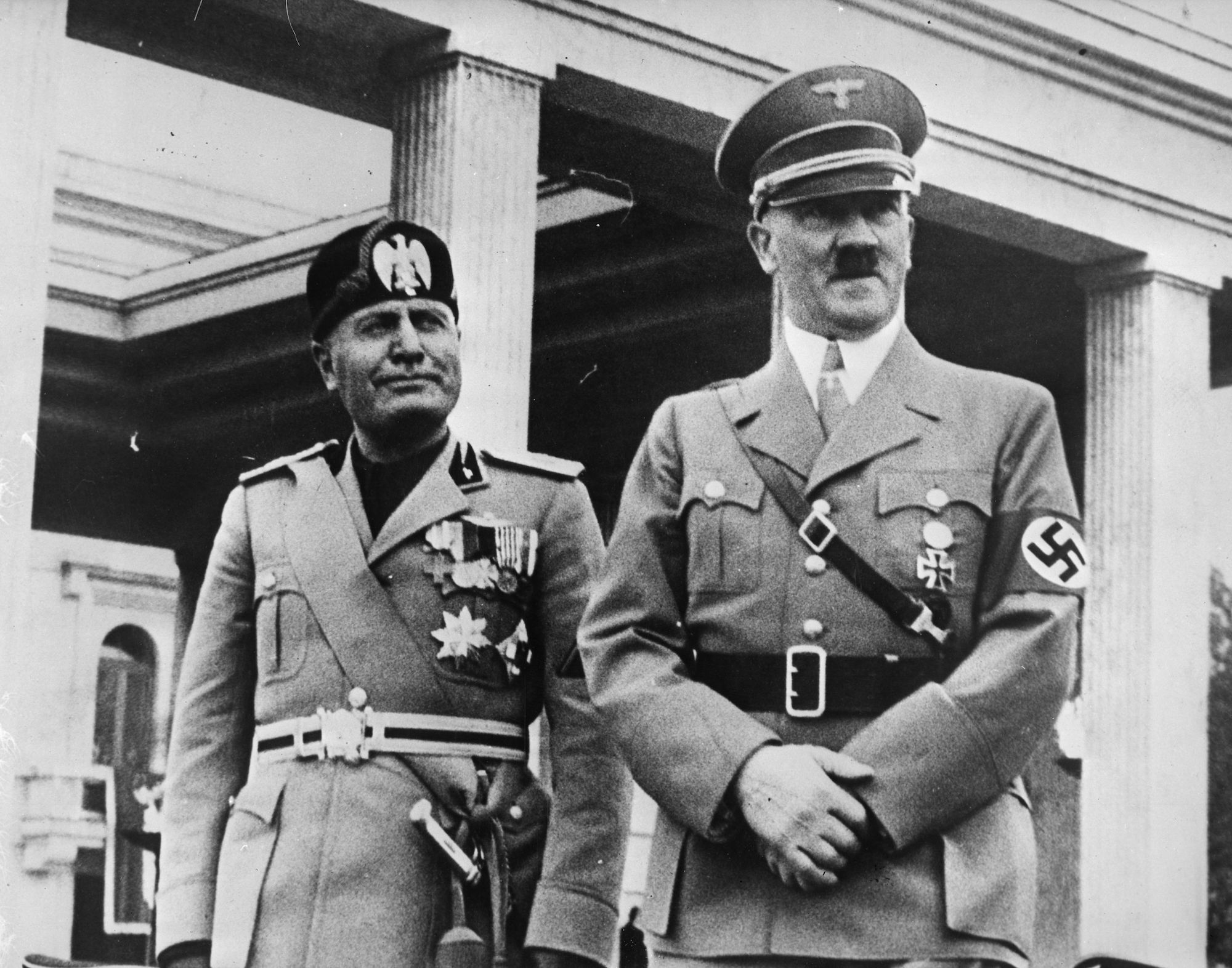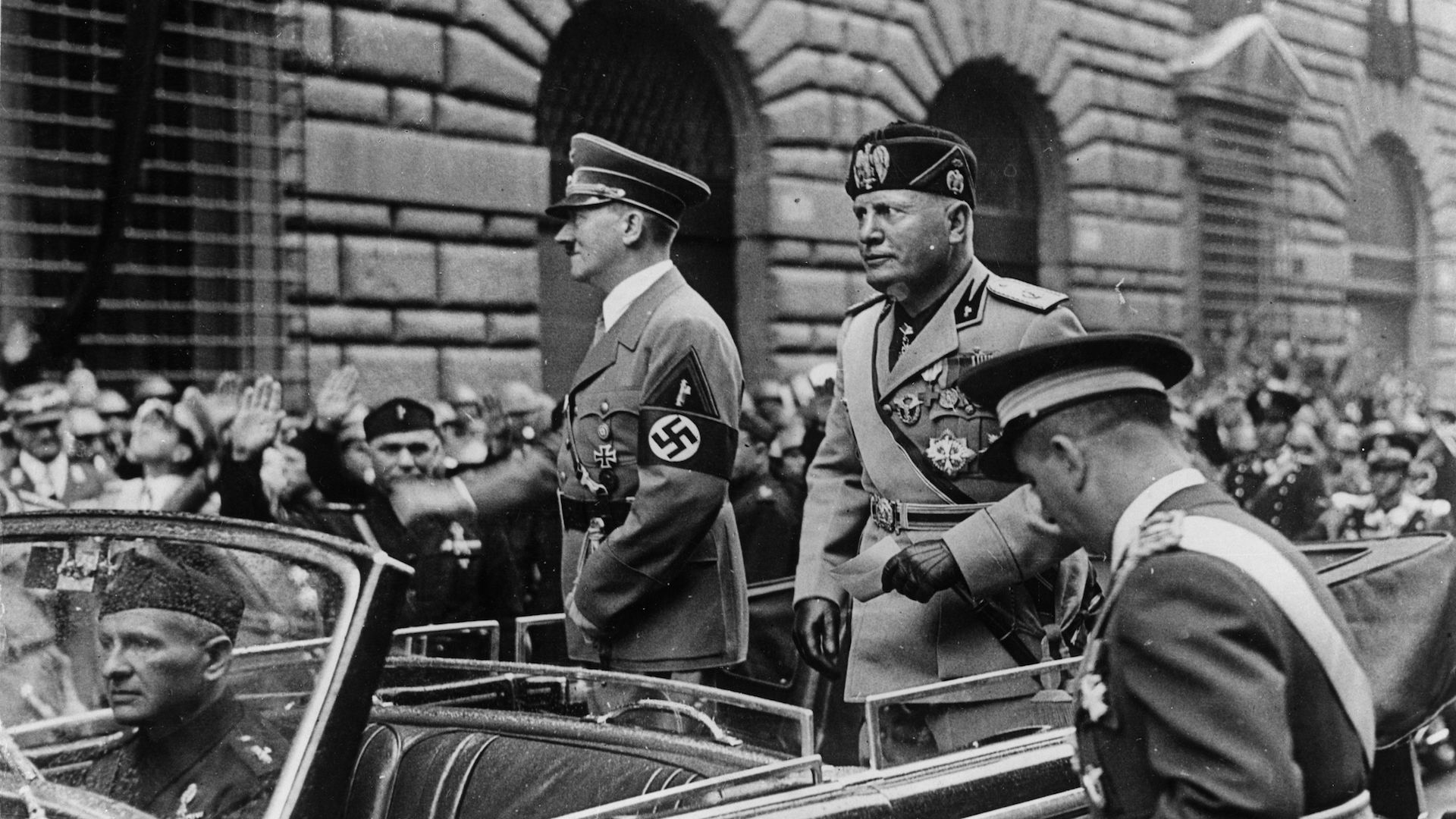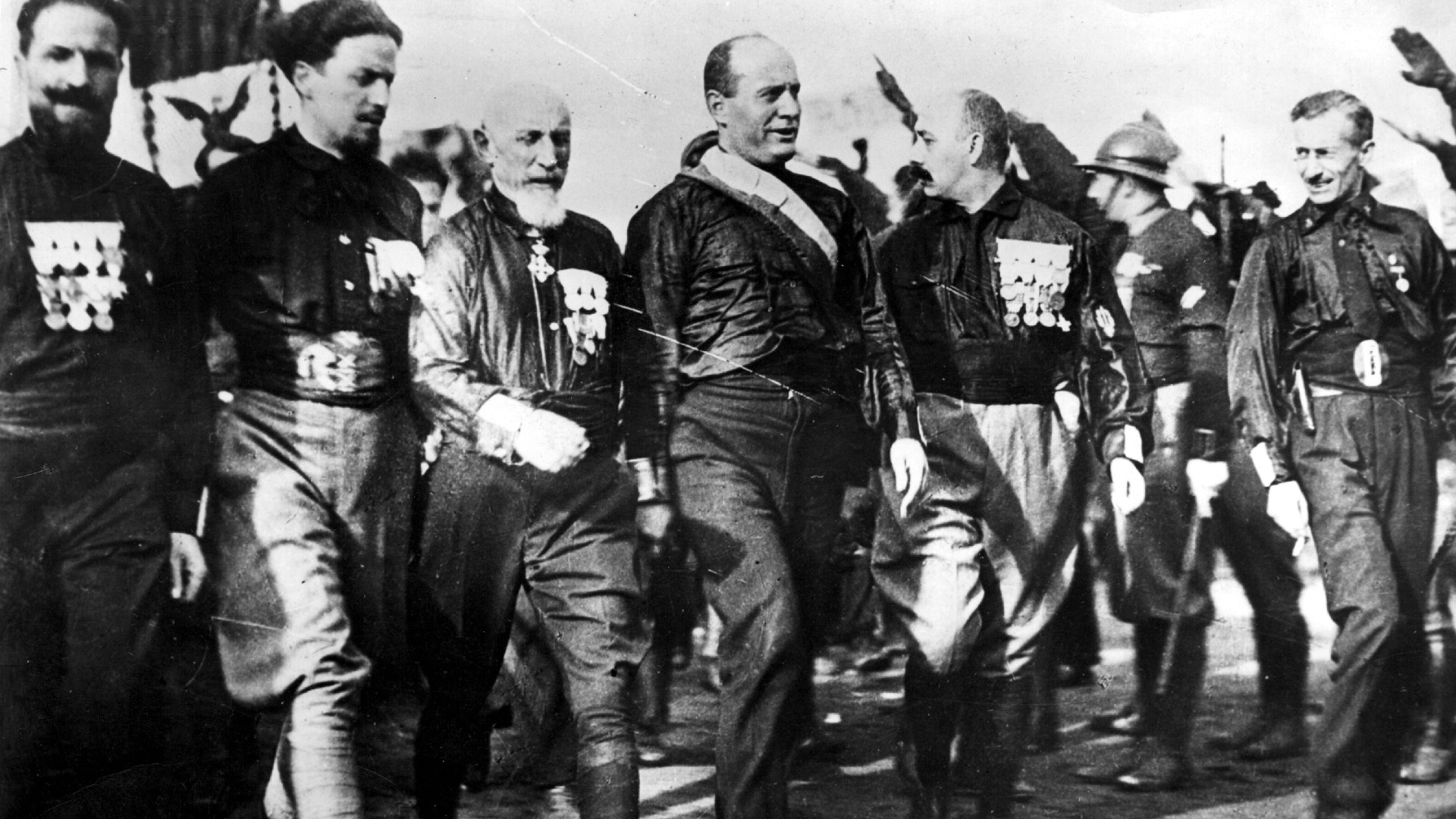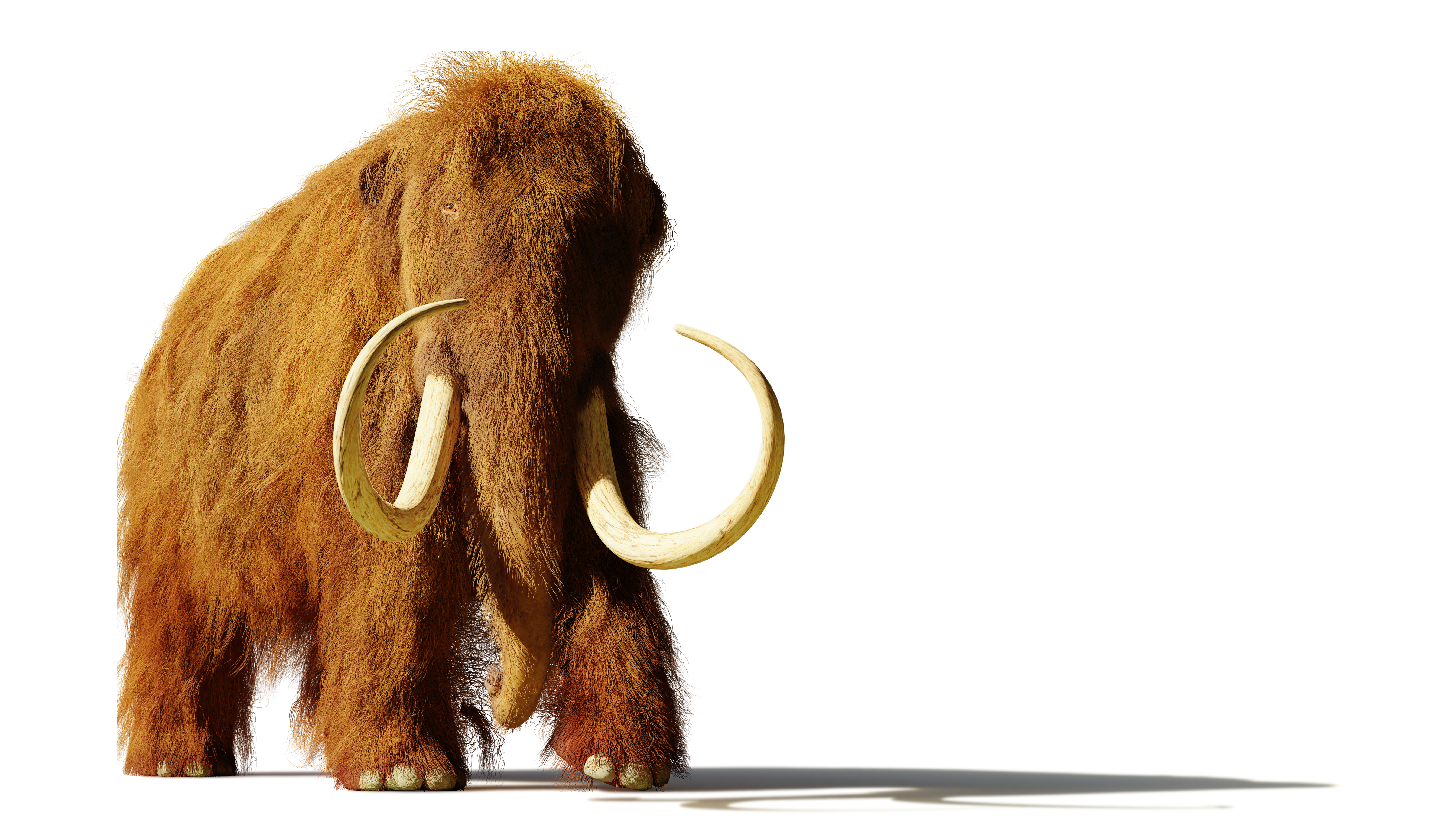What is fascism?
Fascism is a political ideology that's actually pretty difficult to define.

Fascism is a complex and mutable political ideology, which came to prominence in the 1920s and 1930s in Europe. The most notorious examples of fascist governments have been Bennito Mussolini’s National Fascist Party in Italy from 1922 to 1943 and Adolf Hitler’s National Socialist German Workers' Party (Nazi Party) from 1933 to 1945. There are many definitions of fascism; some people describe it as a set of political actions, a political philosophy or a mass movement. Most definitions agree that fascism is authoritarian and promotes nationalism at all costs, but its basic characteristics are a matter of debate.
"[Fascism is] based on an ethnic division between 'us' and 'them', an extreme ethno-nationalism. It's based on nostalgia for a mythic past, typically in which members of the chosen ethnic group had an empire – and it represents the present as loss of that great empire, that natural standpoint in which members of this ethnic group dominated their environment militarily, politically, and culturally," Jason Stanley, professor of philosophy at Yale University and author of "How Fascism Works" (Random House, 2020) told All About History magazine.
Fascism is commonly associated with the Italian and German regimes that came to power after World War I, though other countries have also been ruled by fascist regimes. Adolf Hitler in Germany, Benito Mussolini in Italy, Francisco Franco in Spain and Juan Perón in Argentina were the most well-known fascist leaders of the 20th century.
Certain aspects of fascist rhetoric and political organization have shifted in the decades that followed World War II. And fascism has further evolved in the political landscape of the 21st century as Madeleine Albright, former United States Secretary of State explained in her book "Fascism: A Warning" (Harper, 2019). However, core fascist ideologies and goals espoused by the likes of Hitler and Mussolini are still present in populist organizations today, and continue to shape fascist movements in countries around the world, particularly where their leaders are "someone who claims to speak for a whole nation or group, is utterly unconcerned with the rights of others, and is willing to use violence and whatever other means are necessary to achieve the goals he or she might have," Albright wrote.
Related: What is communism?
Definition of fascism
Mussolini coined the term "fascism" in 1919. The word comes from the Italian "fascio," meaning a bundle or group, and is considered a term for a militant brotherhood. The word "fasces" means an ax tightly bound with sticks, an image that became a symbol of the fascist movement, according to the History Department at King's College in Wilkes-Barre, Pennsylvania.
How is fascism defined? Robert Paxton, a professor emeritus of social science at Columbia University in New York told Live Science that fascism is "a form of political practice distinctive to the 20th century that arouses popular enthusiasm by sophisticated propaganda techniques."
Sign up for the Live Science daily newsletter now
Get the world’s most fascinating discoveries delivered straight to your inbox.
According to Paxton, fascism uses such propaganda to promote:
- anti-liberalism, rejecting individual rights, civil liberties, free enterprise and democracy
- anti-socialism, rejecting economic principles based on socialist frameworks
- exclusion of certain groups, often through violence
- nationalism that seeks to expand the nation's influence and power
Historically, fascists have opposed modernization "if that term means liberalism, democracy, Marxism, individualism, and feminism," Chris Wright, an adjunct assistant professor at City University of New York, said. On the other hand, fascists have favorited modernization "if the term means technological and economic advancement, military superiority, efficiency, and the glorification of speed and machines," Wright wrote in the essay "Reflections on Fascism," published on ResearchGate in 2020, which has not yet been peer-reviewed.
Related: Who was Karl Marx?
Fascism also reflects an intrinsic belief in human inequality, said journalist Shane Burley, author of "Why We Fight: Essays on Fascism, Resistance, and Surviving the Apocalypse" (AK Press, 2021) and "Fascism Today: What It Is and How to End It" (AK Press, 2017).
"The modern world is constructed under a mythology of human equality — even if equality is not reached, and even if the people involved have no intention of reaching it, it's still the underlying narrative in modern societies that human beings are equal," Burley told Live Science.
Fascism, however, promotes the concept of innate inequality and inescapable social hierarchies between groups, Burley said. Underlying this hierarchy is the idea that a person's rank in society is determined by aspects of identity that are beyond their control, such as ethnicity or gender, Burley explained.
Why is fascism so hard to define?
Fascism always takes on the individual characteristics of the country it is in, leading to very different regimes. For instance, Paxton wrote in his essay "The Five Stages of Fascism" published in 1998 in the Journal of Modern History that, "religion … would play a much greater role in authentic fascism in the United States," than it would in the more secular Europe.
Further complicating matters, nonfascist governments have often mimicked elements of fascist regimes to give the appearance of force and national vitality, Paxton said. For example, mass mobilizations of citizens in colored shirts do not automatically equate to a fascist political practice, he explained.
The prevalence of the word "fascism" in common vernacular also causes definitional problems. In recent years, the term "is used more often as a political insult than as a historically-informed analytical term," according to The Lowy Institute, an Australian think tank in Sydney.
"The use of "fascism" as a generic term for authoritarianism is a terrible problem. Fascism is one specific kind of authoritarianism," Stanley said. "Fascism is a very specific thing – it’s not a name for whenever an authority figure acts incorrectly."
Related: What is antifa?
Unlike most other political, social or ethical philosophies — such as communism, capitalism, conservatism, liberalism or socialism — fascism does not have a set philosophy. "There was no Fascist Manifesto, no founding fascist thinker," Paxton wrote.
"Fascism is about power – it’s not about belief. In "How Fascism Works", I treat fascism as a particular set of tactics to seize power. Fascists do not need to believe that the panic they spread, for example about immigrants, is justified, in order to use it to win elections. Just using it is a fascist tactic," Stanley explained.
Though fascism's definition can be elusive, all fascist movements share some core beliefs and actions.
What makes a fascist?
Fascism requires some basic allegiances, such as to the nation and to a gatekeeping "master race" or group. The core principle — what Paxton defined as fascism's only definition of morality — is to make the nation stronger, more powerful, larger and more successful. Since fascists see national strength as the only thing that makes a nation "good," fascists will use any means necessary to achieve that goal.
As a result, fascists aim to use the country's assets to increase the country's strength. This often leads to a nationalization of assets, and in this, fascism resembles Marxism — an anti-capitalist economic, philosophical and political framework of beliefs that promote a classless society, according to the Center for the Study of Language and Information at Stanford University in California.
Guided by the principle of extreme nationalism, fascist regimes tend to perform similar actions, though the particulars differ, author George Orwell wrote in his essay "What Is Fascism?" According to Paxton, who has written several books on the subject, including "The Anatomy of Fascism" (Vintage, 2005), these regimes make use of grand gestures, such as parades and leaders' dramatic entrances.
Fascists also excel at propaganda, using it as a tool to scapegoat certain groups; however, those groups may differ from country to country. For instance, the Nazi regime demonized Jews and other ethnic minorities, such as the Romani people, while Mussolini's Italian regime targeted Bolsheviks — radical, far-left Marxists.
Related: What are the different types of governments?

Paxton also said that fascism is based more on feelings than philosophical ideas (which may explain why fascism can be hard to define). In "The Five Stages of Fascism," he defined seven "mobilizing passions" for fascist regimes. They are:
- The primacy of the group. Supporting the group feels more important than maintaining individual rights.
- Believing that one's group is a victim. This justifies any behavior against the group's enemies.
- The belief that individualism and liberalism enable dangerous decadence and have a negative effect on the group.
- A strong sense of community or brotherhood.
- Individual self-esteem is tied to the perceived greatness of the group. Paxton called this an "enhanced sense of identity and belonging."
- Extreme support of a "natural" leader, who is typically male. This results in one man taking on the role of national savior.
- Affinity for "the beauty of violence and of will, when they are devoted to the group's success in a Darwinian struggle," Paxton wrote. The idea of a naturally superior group or, especially in Hitler's case, biological racism, fits into a fascist interpretation of Darwinism.
Once in power, "fascist dictatorships suppressed individual liberties, imprisoned opponents, forbade strikes, authorized unlimited police power in the name of national unity and revival, and committed military aggression," Paxton wrote.
History of fascism
Mussolini's 1919 fascism mixed extreme nationalist expansion with social programs like women's suffrage and workers' rights, accumulating power by forming alliances with conservatives and existing government factions. The success of fascism in Italy sparked the rise of fascist movements across Europe, such as the National Socialist German Worker's Party (the Nazi Party), the British Union of Fascists, Portugal's National Union, the Yugoslav Radical Union in Yugoslavia, and Austria's Fatherland Front.
According to the AHA, in Italy in 1922, strong-arm squads known as the Blackshirt Militia, who were financed by industrialists, fought socialist farmer organizations, conducted raids on socialist newspapers and occupied socialist-led towns. They threatened to march on Rome in 1922. The government tried to placate Mussolini by naming him prime minister, but in 1925, he established himself as dictator. What followed was violent suppression of dissent; the deification of Mussolini; violent expansion into Ethiopia, Albania and other countries; and in 1939, alliance with Nazi Germany and participation in World War II.
Hitler learned many lessons from Mussolini, including the importance of propaganda and violence. In the 1920s, he led his Nazi Party to prominence through dramatic speeches, grand entrances and passionate rhetoric against Jews, Marxists, liberals and internationalists — those who support social and economic collaboration between nations, Paxton wrote. In January 1933, Weimar Republic President Paul von Hindenburg named Hitler chancellor, hoping Hitler would stop the growing Communist Party. By the summer, Hitler's rule had become a dictatorship. In violation of the Versailles Treaty, Hitler rearmed Germany and began invading neighboring lands. The invasion of Poland on Sept. 1, 1939, launched World War II and the Holocaust.
European fascist ideas inspired regimes throughout Latin America, including in Bolivia and Argentina. "These countries also had a very difficult time during the Depression, and ordinary middle-class parties operating parliamentary systems were notably unsuccessful," Paxton said. Spain and Portugal were dictatorships until 1975, but those governments were a mix of conservative and fascist parties.
Economics of fascism
The Library of Economics and Liberty defined fascism's economic practices as "socialism with a capitalist veneer," but the economics of fascism are complicated. For fascist governments, the purported goal is autarky, or national self-sufficiency, it says. In the 1920s and 1930s, fascist leaders pitched this as an effective middle ground between bourgeois, profit-oriented capitalism with a distinct upper and lower class, and revolutionary Marxism that would dismantle many social institutions and persecute the bourgeoisie, or upper class.
In the decades prior to WWII in Germany and Italy, fascist cartels (business monopolies under government control) determined many aspects of commerce, finance, agriculture and manufacturing, and made decisions according to what would further the state's power; however, they also allowed the conservative business elite to maintain property and increase their wealth. The cartels forcibly lowered wages and paid the workers with national pride.
One element of fascism is collaboration with capitalists and the conservative elite. Fascists, even when they start out with radical ideas, always collaborate to move in the direction of protecting private property, Paxton told Live Science. This is, however, an awkward alliance, he said.
"Conservatives are basically people of order who want to use things like the church and property to maintain an existing social order, whereas fascists are revolutionists who will break up social institutions if they think it will bring national power or grandeur or expansion," he said. "In Nazi Germany, the businessmen were not enthusiastic about Hitler, because he had anti-capitalist ideas in the beginning." Though conservative German businessmen later formed a brief alliance with Hitler's regime, "they often stepped on each other's toes," Paxton said. On July 20, 1944, conservatives, led by Colonel Claus von Stauffenberg, tried and failed to assassinate Hitler.
"There is always tension between the two movements," Paxton said.
How fascism works
Throughout 20th-century history, fascist regimes have required certain sociocultural and political situations to rise. It is also worth noting that many countries, such as Britain in the 1920s and 1930s with the British Union of Fascists under Sir Oswald Mosley, have seen fascist ideas increase in popularity without regimes coming to power or fascist parties becoming star political players.
First and foremost, fascist regimes in the 20th century have required extreme national crises to gain popularity and power. After defeat in World War I, many in Germany and Italy were anxious about the future of their countries. In Germany, "citizens faced poor economic conditions, skyrocketing unemployment, political instability, and profound social change," says the U.S. Holocaust Memorial Museum. Meanwhile, Italian citizens were reeling under rising inflation, unemployment, strikes and economic policies that were "confused and inadequate," according to the AHA.

Fascism also requires a general belief that the established government parties and institutions are incapable of improving the national situation. But for a fascist party to become powerful, the combination of a strong national identity and disenchantment with government still needs a catalyst to convince populations to side with what often starts as small fringe movements. In Germany, and to an extent Italy, this catalyst was the Great Depression, historian Aristotle Kallis, a professor at Keele University in England, said in a lecture on fascism that he delivered in Amsterdam in 2015.
The Great Depression and WWI wreaked havoc on the German economy. "The war had unleashed inflation, and everyone who had savings or was living on a fixed income, like retired people, saw their money dwindling away," Paxton said. People felt desperate, ashamed and lost, he added.
In his "Five Stages" essay, Paxton said that fascism could appear only when a society has known political liberty and when democracy is established enough that the people can be disillusioned with it. For example, Italy had a series of weak, revolving-door governments. And Germany had no effective parliamentary majority for three years before Hitler was named chancellor. Both countries confronted two possible solutions to the problems of ineffective government, suffering people and national humiliation: communism and fascism.
"The rise of fascism is not really comprehensible without paying attention to the rise of communism," Paxton said. "In the 20th century, they were the two movements that proposed to set democracy aside and replace it with something else in order to make the country stronger."
In both struggling Germany and Italy, the political left — consisting of communists and socialists — was gaining traction. In Italy, especially, it appeared that a socialist revolution was imminent. But the existing government and conservative capitalist elites looked upon communism and socialism unfavorably.
Paxton identified fascist pandering to conservatives early in the movement as another factor in setting the stage for a fascist regime. "The only route available to fascists is through conservative elites," he wrote.
In Germany and Italy, governments at the time decided to align themselves with fascists. "The fascist parties came to the attention of the public as the most violent and rigorous opponents to socialism," Paxton said. "The heads of state in both countries offered fascists the position of head of government, because the other options, the traditional parliamentary parties, had failed. Both fascism and communism proposed violent solutions, and one would win by destroying the other," Paxton said.
German and Italian governments, having aligned themselves with the fascists and afraid of a socialist revolution, refused to work with the left. This led to political deadlock, another of the factors Paxton said are required for fascism to come to power.
Fascism today
After World War II, fascism as defined by Mussolini's and Hitler's regimes largely fell out of fashion in Europe and North America. "Fascist" became a go-to political insult, resulting in overuse and reduced meaning, said Paxton. Nevertheless, there have been growing fascist or proto-fascist movements in Europe and North America for the last few decades, he said.
In recent years, the rise of populism — political movements that elevate ordinary people over elites — across Europe and the United States has led many to wonder if fascism is resurgent again. Paxton said he does not think fascism is on the rise in the U.S, describing American populist movements as "much more traditional conservatism," he said. "The basic social political program is individualism, not for everyone, but [for] entrepreneurs. It supports the right of businesspeople to seek maximum profit without rules of regulations."
However, Paxton added, small factions of the rich and powerful in America have recently won popular support "with rhetorical devices that resemble fascism." Though many of the economic, social and political drivers of mid-20th-century European fascism were specific to that time and place, fascism's core ideas can still be found in modern populist movements that embrace hardline nationalism, white supremacy and xenophobia, Burley told Live Science.
Most modern fascist movements are without official political party representation or state power, "so they operate on a social movement framework rather than a political framework," Burley said. Today's fascist movements also use more nuanced language when describing their mission and goals, often appropriating the language of left-leaning movements.
"A good example of this is the language of white nationalism and the alt-right, specifically in the way that they explain racial politics," using terms such as "white separatism" and "white self-determination," Burley said. By borrowing talking points from anti-imperialist movements and decolonization movements from the '60s and '70s, modern movements cloak a fascist agenda in deceptively progressive terminology, Burley said.
"People are generally opposed to open imperialism, so instead they have to use a coded rhetoric about white sovereignty," he added. The broad definition of fascism still applies to such movements — "it's just the external conditions and how people interact politically is what's changed," Burley said.
This article was originally written by Live Science contributor Jessie Szalay and has since been updated.

Mindy Weisberger is an editor at Scholastic and a former Live Science channel editor and senior writer. She has reported on general science, covering climate change, paleontology, biology and space. Mindy studied film at Columbia University; prior to Live Science she produced, wrote and directed media for the American Museum of Natural History in New York City. Her videos about dinosaurs, astrophysics, biodiversity and evolution appear in museums and science centers worldwide, earning awards such as the CINE Golden Eagle and the Communicator Award of Excellence. Her writing has also appeared in Scientific American, The Washington Post and How It Works Magazine. Her book "Rise of the Zombie Bugs: The Surprising Science of Parasitic Mind Control" will be published in spring 2025 by Johns Hopkins University Press.









